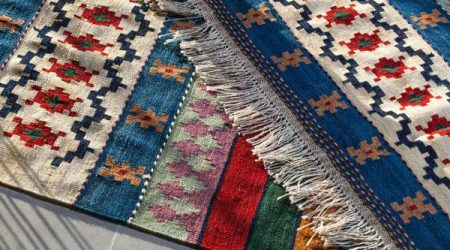Which carpets should we restore?
Which carpets should undergo restoration is a common question, and the decision often hinges on more than just aesthetics—it’s about the carpet’s intrinsic value.
Determining whether your antique carpet is worth restoring involves considering several factors. Ultimately, restoration can impact the carpet’s value; it might enhance it in some cases or diminish it, particularly if the restoration work is subpar. Authentic rugs, whether cherished heirlooms or valuable hand-knotted antiques, represent an investment.
The time and creativity invested in these pieces merit proper care for their longevity. However, not every carpet justifies the restoration cost. Some carpets hold emotional and symbolic value that transcends monetary measures, while others may not warrant the expense. In such cases, it might be prudent not to proceed with restoration unless desired.
When faced with a damaged carpet, the crucial question is whether investing in its restoration is worthwhile. The answer depends on whether restoration enhances the carpet’s value or makes minimal difference. Although there are exceptions, modern carpets typically lack inherent value for restoration.
Nevertheless, if a carpet holds sentimental value, repairing it could be a worthwhile choice. Antique rugs, on the other hand, derive their value for restoration from factors such as color, design, manufacturing technique, material, age, and place of origin.

Carpets that are likely investment-worthy for restoration
Carpets that are likely investment-worthy for restoration include those representing specific historical periods, such as Safavid carpets, due to their historical significance and rarity. Carpets with distinctive patterns, like famous kilims or those featuring flower and tree of life motifs, are also candidates for attention over time. Finely woven rugs crafted by master weavers or renowned manufacturers such as Haji Jalili, Ustad Mohtashem, and Abdul Hussein Kermani consistently command high prices and value.
- Carpets originating from specific regions like Tabriz, Bijar, Kashan, and Heriz exemplify quality and carry a higher market value.
- Nomadic and village rugs maintain popularity and value, but not all fall into the category of expensive rugs. Therefore, when considering restoration, it’s essential to evaluate the actual worth of the carpet against the cost of restoration.
- These guidelines provide general insights and don’t dictate the value of a specific carpet type. Generally, carpets with greater potential for value retention or appreciation necessitate more investment in maintenance and restoration. Entrust the restoration of your investment only to a specialist with expertise in antique and high-quality carpets.
- Carpet repairs vary significantly. When contemplating the restoration of a valuable or sentimentally significant carpet, careful consideration is crucial. The process often involves reweaving and knot tying using the original method, a task only a highly qualified restorer can execute accurately. A poor restoration is evident, affecting the carpet’s appearance and diminishing its value. Restoring a carpet goes beyond simple sewing and is not suitable for antique carpets.
- Matching the exact colors of the original carpet is challenging due to variables like color type and fading over time. While fresh colors may stand out initially, a skilled restorer can achieve a near-perfect match with practice.
- Gabbeh rugs may not always benefit from restoration. If a carpet has low resale value or is a rare, high-quality museum piece, restoration can potentially diminish its value. Exceptions arise when repair is crucial to maintaining the carpet’s integrity and preventing further damage. Seek expert opinions before deciding on restoration for carpets meeting these conditions.
- While a current design trend mimics antique looks in new carpets, authentic aged rugs can seamlessly blend with various interior styles and soften the modern interior’s harshness.
- Deciding whether to repair antique carpets involves considering multiple factors. Consult with an experienced professional, ask about different repair methods, and request examples of the quality of work from the chosen company or individual.
Seeking someone to work with on restoring an antique carpet is a significant decision. The restoration process is intricate and constitutes a major investment. Therefore, it is crucial to select a competent and reliable professional for the task, as this choice directly impacts something you’ll live with. Ensure you’ve made a thoughtful decision by choosing a seasoned expert.
Restoration of antique carpets aims to revive the original beauty and physical integrity of rare, antique, or valuable rugs that may have suffered damage over time. The time and cost involved in restoration depend not only on the conditions of the carpet but also on its value relative to the repair costs. Successful restoration can render a damaged piece reusable and commercially appealing. The ultimate reward of rug washing and restoration lies in the assurance that a rare and beautiful work of art will be preserved for future generations.
Addressing wear and tear from years of use necessitates repairing and restoring specific areas of the carpet, involving precise adjustments of yarn, color, and shading. This intricate process demands expertise, training, and a discerning eye to identify and restore subtle changes in the texture and color of the carpet.

Key points to consider for carpet restoration:
- Almost any carpet can be repaired and restored to its original condition.
- Don’t discard used or old carpets assumed to be damaged without exploring professional restoration solutions.
- Assess the worthiness of the restoration cost relative to the carpet’s investment value by having it valued by the chosen company or individual.
- Regular maintenance and professional cleaning can prevent costly repairs and sustain the appearance and condition of rugs of any size and style.
- Promptly address any needed repairs to prevent further damage and higher costs.
- While partial repairs like shiraz-duzi (shiraz embroidery), root knotting, and finishing carpet edges can be done at home with appropriate skills, straightening and removing wrinkles require professional expertise available only through trained specialists. Trust experienced and professional carpet restorers for such tasks.











